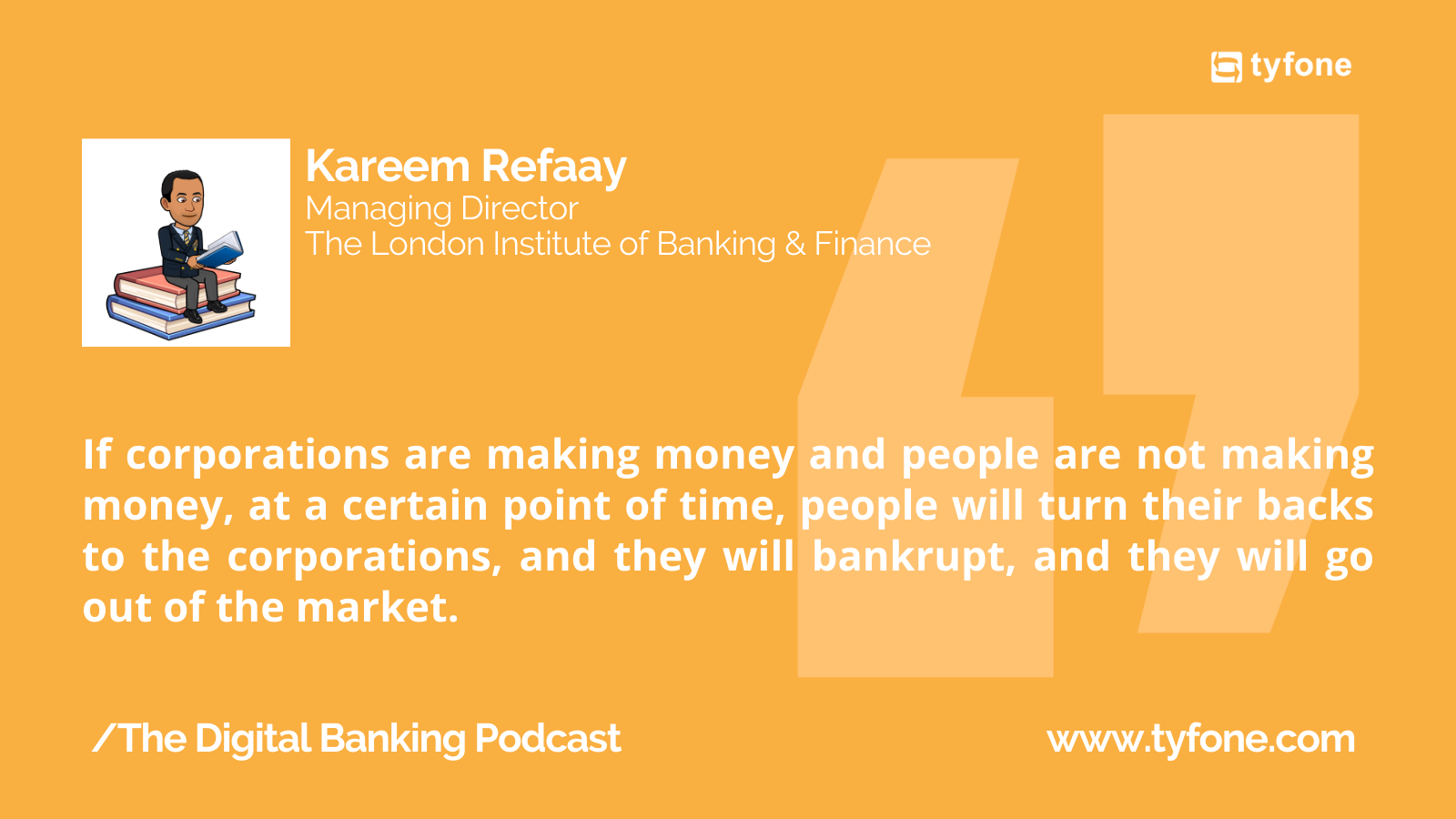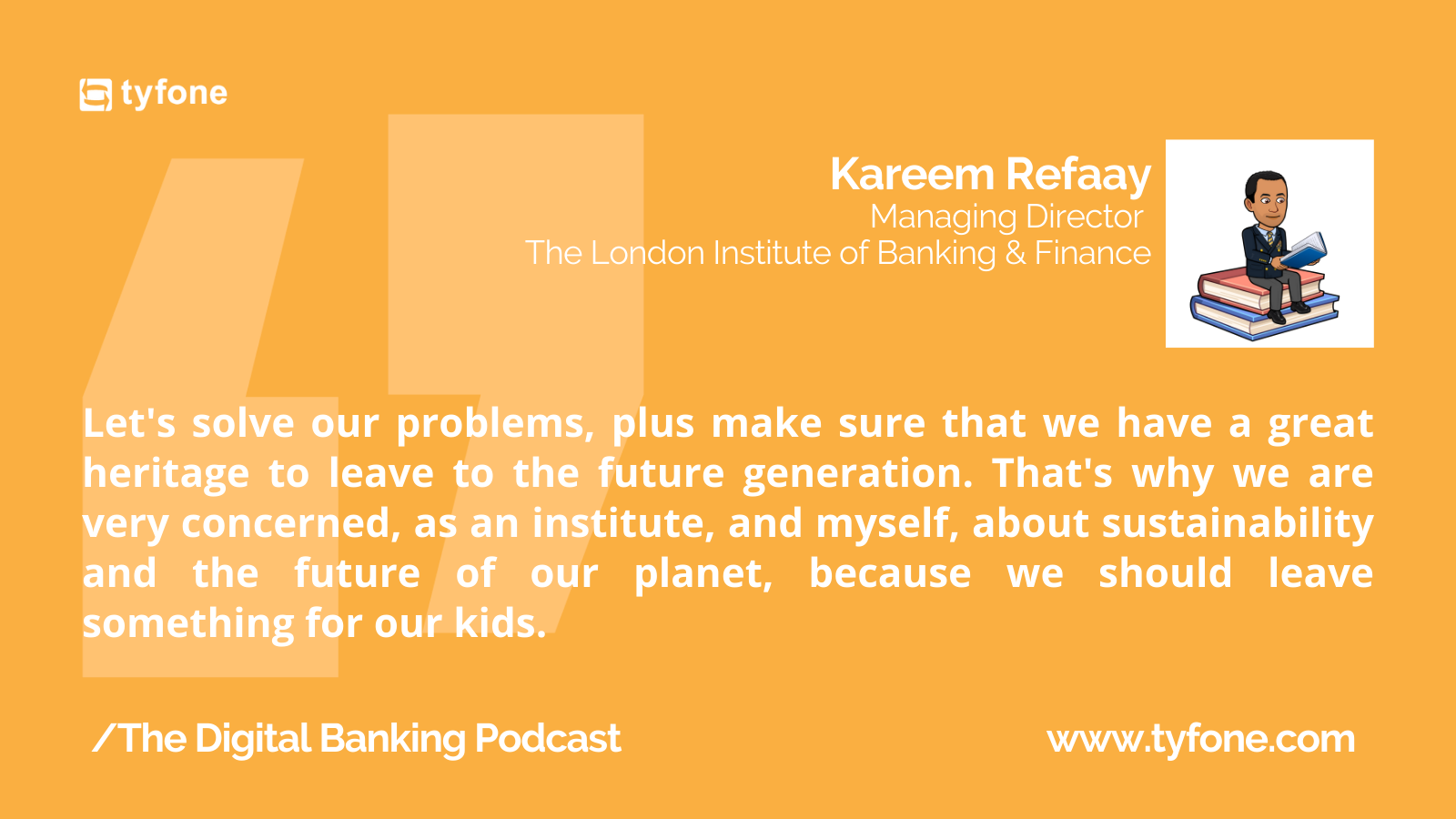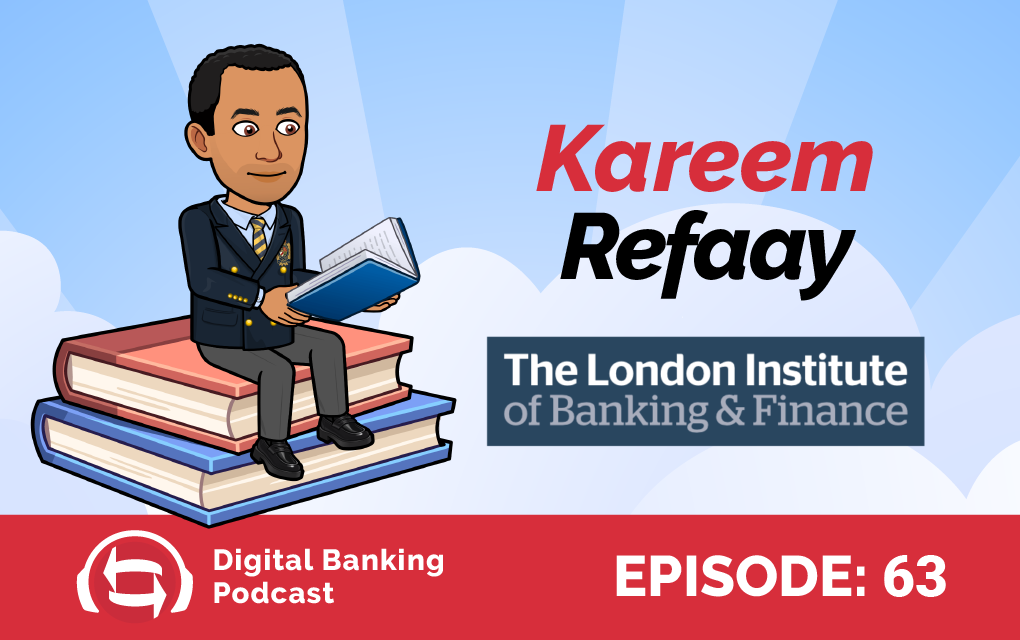The People Component of Digital Transformation, With Kareem Refaay
April 13, 2023
- You can improve a process and business, but you can change someone’s life through education. If you want to make a difference in anyone’s life, you should balance the business side of the house and the people side of the house.
- The U.S. has plenty of tech infrastructure, but it also has plenty of unbanked and under-banked people. This means that, per capita, some other countries are able to provide better financial services at the consumer level.
- There’s more to financial inclusion than providing access to transaction al services. Financial inclusion is achieved through education. People need to understand what money is, how to invest it, and how to use it most efficiently.
Financial inclusion – or more to the point, lack thereof – is a problem that technology can’t fix on its own. As financial institutions continue down the path to digital transformation, they must understand that financial inclusion is more than providing transactional access to people. It’s a matter of people who know and understand finances helping to raise the people who don’t.
Fortunately, there are institutions specializing in banking and financial education. One of them is The London Institute of Banking & Finance, which advances banking and finance by providing outstanding education, tailoring solution to the needs of businesses, individuals, and society.
Kareem Refaay, the managing director at the Institute, explained how his organization can help new generations of bankers and clients be financially smart.
“A lot of my students in the Middle East and the region, 80% of our students, are female below the age of 25, and that’s a very important factor for us, that we make a change, we empower younger generations.,” said Refaay.
“It’s very interesting that we also bring those difficult, challenging topics to the region to help support development, like digital transformation, fintech, sustainability, sustainable finance. We are discussing and delivering education initially.”
“Re-engineering was a good example that started off as something that was supposed to be about redesigning business processes to make them more efficient and effective and evolved to become a buzzword and synonym for layoffs. And digital transformation is the same thing in the banking industry,” claimed Shevlin.

Bigger Isn’t Always Better
According to Refaay, the manner in which infrastructure is managed in the U.S. puts restrictions on certain people. As community FIs strive for better financial inclusion, these infrastructure limitations must be addressed. To illustrate contrast, Refaay noted that it is easier for the Japanese, for example, to have more technological infrastructure and facilities due to the dynamics and geography of Japan.
“I can do something on a consumer level in Japan better than doing something in the U.S. because there are a lot of consumers in the U.S. out of coverage,” noted Refaay. “On the other side, we see in the U.S., the concentration of big corporations is in major states. So then that concentration within that technology platform, then the investment banks, the fund managers, all those kinds of things with their technology and advancement and corporation that work on corporate and banking, are concentrated around these states so that they can advance things.”
He encouraged U.S. institutions to look globally for financial inclusion models to emulate.
Financial Illiteracy Should be Treated as a Disease
Emphasizing the importance of financial education, Refaay said that there are countries where there is a high level of education – a large number of doctors, engineers, scientists, businessmen – but challenges remain in terms of financial inclusion and financial literacy.
“You would find a doctor and an engineer, and I see a lot of them. They are my friends; they come to me and tell me, ‘Kareem, what is the current account?’ Are you asking me what a checking account is?” he said. “You are a 45-year-old doctor who has been getting your salary on a checking account for the past 20 years, and you don’t understand how to operate a checking account ?”
He added that the inability to manage financial difficulties should be defined as a disease requiring intervention.
” A lot of people receive calls about a parent who is not able to pay a bill, and you have to cover that, or you’ve provided a guarantee of someone, brother, sister, who has difficulties,” noted Refaay. “Then you find yourself in financial difficulty because of someone else. So, managing money is education, and incapability of managing your own money leads to difficulties.”

The FI/Accountholder Bond
Refaay claimed that an emotional bond between an FI and its accountholders is a critical component of digital transformation.
“A very important factor, while you are doing all those terminologies about customer journey mapping, and transaction SOPs, and turnaround times and all these things, is to try to find the way: How we can make digital transformation more emotionally intelligent, that it doesn’t disconnect us as a customer and corporate, but have a factor to bring us together in a way or another? Because most of the reason organizations want to digitally transform is genuine: it’s for good for the customer, it’s to see in time challenges and bring things to their doorstep, “said Refaay.
He added that it is very important to consider digital transformation’s impact on customers.
“When you’re trying to work for the digital transformation, once you complete that amazing customer journey, or you do an approach of changing the whole world, ask yourself: How can I make that process more emotional so customers feel me?” he noted. “I remember when call centers started, we’re talking about more than 30, 40, 50 years back, when call center agents used to get the training, they always used to smile while talking to the client because it’s contagious even if you don’t see. So I would say for people designing apps and doing digital transformation – smile in the process, the customer might see.”






